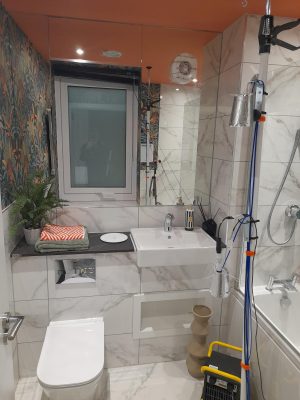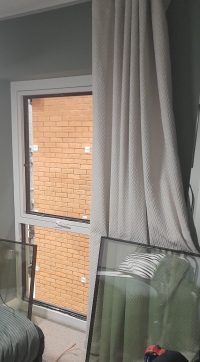Modus triple fitted to Energy House 2.0

Eurocell is playing a central role in Energy House 2.0, one of the world’s most advanced building performance research facilities at the University of Salford, that is reshaping how the industry tests and improves homes for net-zero.
The £16m Energy House 2.0 facility is the only climate-controlled research chamber of its kind in the world. Here, homes are tested in real-world weather conditions ranging from snowstorms at –23°C to extreme heatwaves of +51.5°C, providing vital insights into how construction products perform under the pressures of climate change and future energy demands.
As part of the project’s latest phase, Eurocell’s Modus triple-glazed window system has replaced the original double-glazing in the concept research homes. This upgrade is set to raise the bar for energy efficiency, thermal comfort, and sustainability.
Ian Kernaghan, head of product, design and development at Eurocell said: “Triple glazing is a key step in futureproofing homes. Being part of Energy House 2.0 lets us show just how much impact design-led, high-performance products like Modus can have. We’re not just testing windows, we’re demonstrating solutions that can help deliver lower carbon homes at scale.”
Energy House 2.0 is designed to help the construction industry and its supply chain prepare for zero carbon housing.

The Modus triple-glazed system directly supports these ambitions by:
- Delivering significantly improved thermal performance compared to traditional double glazing.
- Contributing to reduced operational energy use and lower household energy bills.
- Demonstrating how design-led innovation can be applied at scale across UK housing stock.
The integration of Eurocell’s Modus system into the Energy House 2.0 homes complements pioneering research already being carried out within the project. In earlier phases, testing demonstrated that innovative low-carbon construction methods could deliver significant reductions in embodied carbon emissions and maintain comfortable indoor temperatures for less than £2 per day in winter conditions.
By adding high-performance triple glazing to the test homes, Eurocell is helping the test homes meet very high levels of thermal efficiency, providing valuable real-world data for housebuilders, policymakers, and homeowners alike.
Ian added: “Energy House 2.0 is about more than research; it’s about reimagining the way we build homes. Eurocell is proud to be contributing solutions that help reduce environmental impact while delivering comfort and affordability for the people who live in them.”
Eurocell says that its involvement in Energy House 2.0 underlines its ongoing commitment to sustainability and innovation across the construction sector. As the industry faces the dual challenges of climate change and the demand for large-scale housing growth, partnerships like this are crucial in proving that low-carbon, high-performance homes are not only possible but achievable at scale.
Learn more about the Energy House 2.0 project here: https://energyhouselabs.salford.ac.uk/labs/energy-house-2-0/